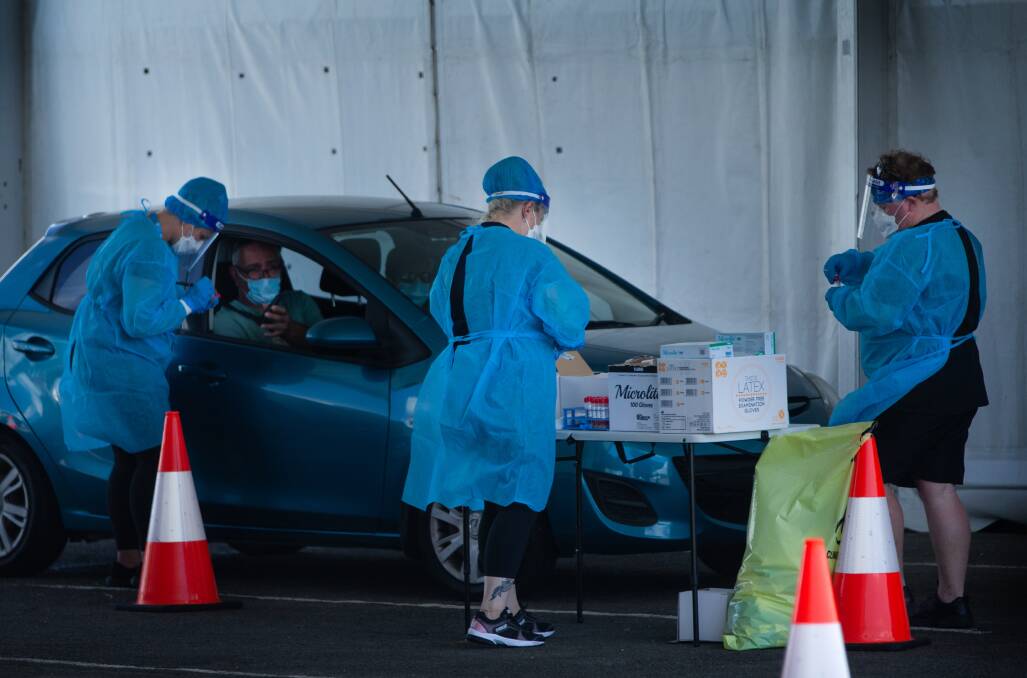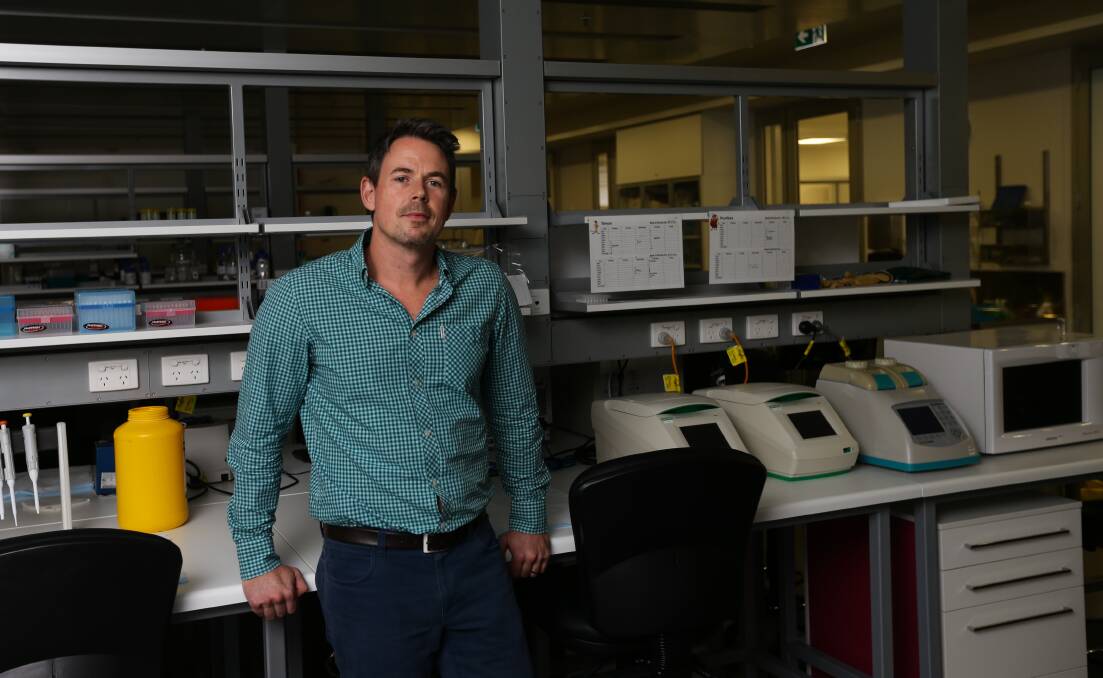
Thousands of people in the Hunter Region will have COVID-19 without knowing it, Newcastle-based viral immunologist Nathan Bartlett says.
NSW Health data shows that about 40,000 people tested positive for COVID in the Hunter over the past month.
Researchers have estimated that up to 40 per cent of those who return positive tests for COVID are asymptomatic. That is, they have no symptoms.
Associate Professor Bartlett, of HMRI and the University of Newcastle, said many people who didn't have COVID tests would also have been positive and asymptomatic without knowing it.
"No doubt when we catch up to broadly checking population immunity to this virus, we'll find a huge number of people with antibodies that show they have clearly been infected," Dr Bartlett said.

He said distinguishing the different antibody response to the virus and vaccines could be done easily.
"The vaccine only presents one viral protein to the immune system, whereas the virus infection presents all the viral proteins to the immune system," he said.
"So we can be sure to look for that and identify those who have had infection versus vaccination.
"I'm sure when we do that, a huge number of people will be very surprised to learn that they have definitely been infected."
Research shows that the percentage of asymptomatic infections varies with age.
The younger a person, the more likely they are to have experienced an asymptomatic infection.
Some people, though, are known to be "presymptomatic" when they test positive. They have no symptoms at the time of their test, but later develop symptoms.
"There is growing evidence that Omicron tends to favour replicating in the upper respiratory tract," Dr Bartlett said.
"People can also mistake or not notice symptoms localised in their upper respiratory tract. It's a mildly scratchy throat or slightly runny nose and you'd normally have hayfever, so you don't notice it."
A Yale School of Public Health systematic review and meta-analysis of asymptomatic SARS-CoV-2 infection found that "many studies do not distinguish between the presymptomatic stage and truly asymptomatic infections".
"By analysing over 350 papers, we estimated that more than one third of infections are truly asymptomatic," the study said.
"We found evidence of greater asymptomaticity in children compared with the elderly, and lower asymptomaticity among cases with comorbidities compared to cases with no underlying medical conditions."
It was an asymptomatic staffer that led to an outbreak with more than a dozen hospitalisations and two deaths at the RFBI Hawkins Masonic Village in Edgeworth in August last year.
Dr Bartlett said asymptomatic cases were "another reason why this virus can spread so effectively".
"People don't know they're infected and continue to behave and socialise thinking they're not infected and pass the virus on," he said.
He said this was common with all respiratory cold and flu viruses. Test a group of schoolchildren for a respiratory virus and "a good proportion of them will be positive with zero symptoms".
"But they'll be carrying those viruses and potentially transmitting them."
He gave the example of antibody levels that were tested in the UK population after the swine flu outbreak in 2009.
It showed a "huge number" of people had swine flu but were not aware of any symptoms.
"It's no surprise that SARS-CoV-2 is not different in that regard," he said.
"You'll get a range of infections from completely asymptomatic, as many people will be, right through to the most severe end of the spectrum.
"We know more about those cases because they're the ones that go to hospital."
Despite research estimates of asymptomatic infections, Dr Bartlett said precise numbers were difficult to pin down.
"Every variant will be a bit different. The virus has changed a lot over the last two years.
"And the rate of asymptomatic infection will change with levels of vaccination and infection-induced immunity."
He said it was clear that there would be higher levels of asymptomatic infection with increased vaccination rates.
"We're certainly seeing that because the rate of infections went up, but hospitalisations did not increase proportionately," he said.
"As our immunity establishes itself, the amount of disease we're seeing will decrease. A lot less people will become symptomatic."
Nevertheless, many breakthrough infections have occurred with the Omicron variant. That is, people have had symptoms despite having two or three jabs.
This was because Omicron was "so different from the previous variants and the variant on which the vaccines are based".
As such, the vaccines could only offer "partial protection", although research shows they do provide strong protection against severe disease and death.
Furthermore, boosters increase the number of antibodies that work against the virus.
"When you mount an immune response to the spike protein, you generate lots of different antibodies to regions in the protein," he said.
"Some of those regions are now different in Omicron, so those antibodies won't work.
"But there are some antibodies that still do stick. So now it's just a matter of getting the numbers of the effective antibodies up high enough to compensate for the other antibodies that are no longer working.
"That's what the booster is doing. But it's not providing absolute protection - there will be breakthroughs."
Dr Bartlett said people with existing immunity were more likely to be asymptomatic, as were children.
This has raised concern over a spike in community transmission with the return to school.
"As we know, those least likely to become ill are kids," he said, adding that they can become infected and transmit the virus.
He said the chances of a person being asymptomatic related to "the different way the immune system handles the infection, particularly the innate immune system".
"A child relies a lot more on its innate immune system, as the immune system develops during the first years of life," he said.
Infections in the early lives of children coincide with "the maturation of their adapted immune system and memory immunity, which adults rely more on".
"That changes the disease profile in kids versus adults.
"That's why when adults get these viruses and have no memory immunity to a new virus like SARS-CoV-2, you can get quite severe clinical outcomes.
"That's particularly in those who are older who don't have fully functioning immune systems."







